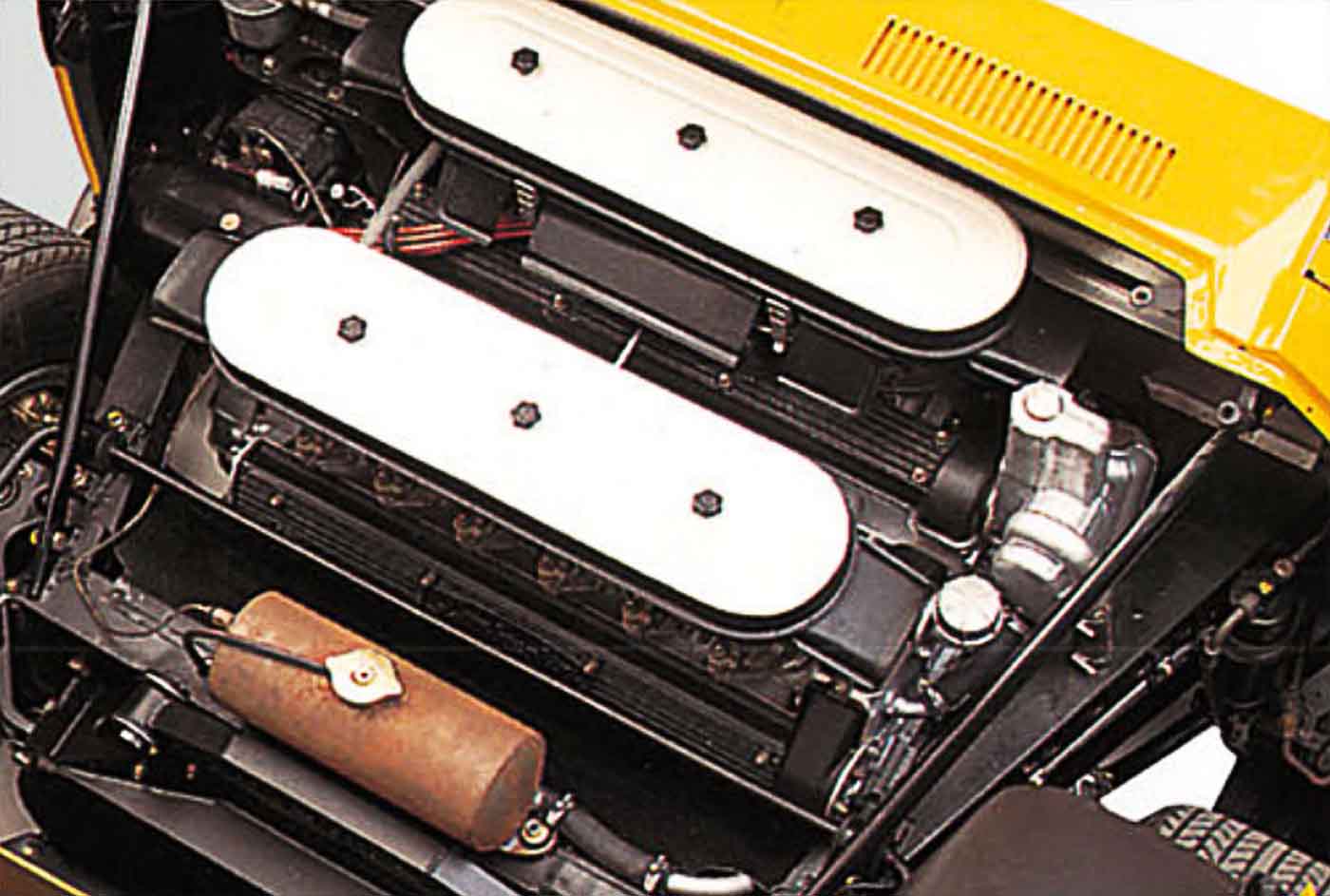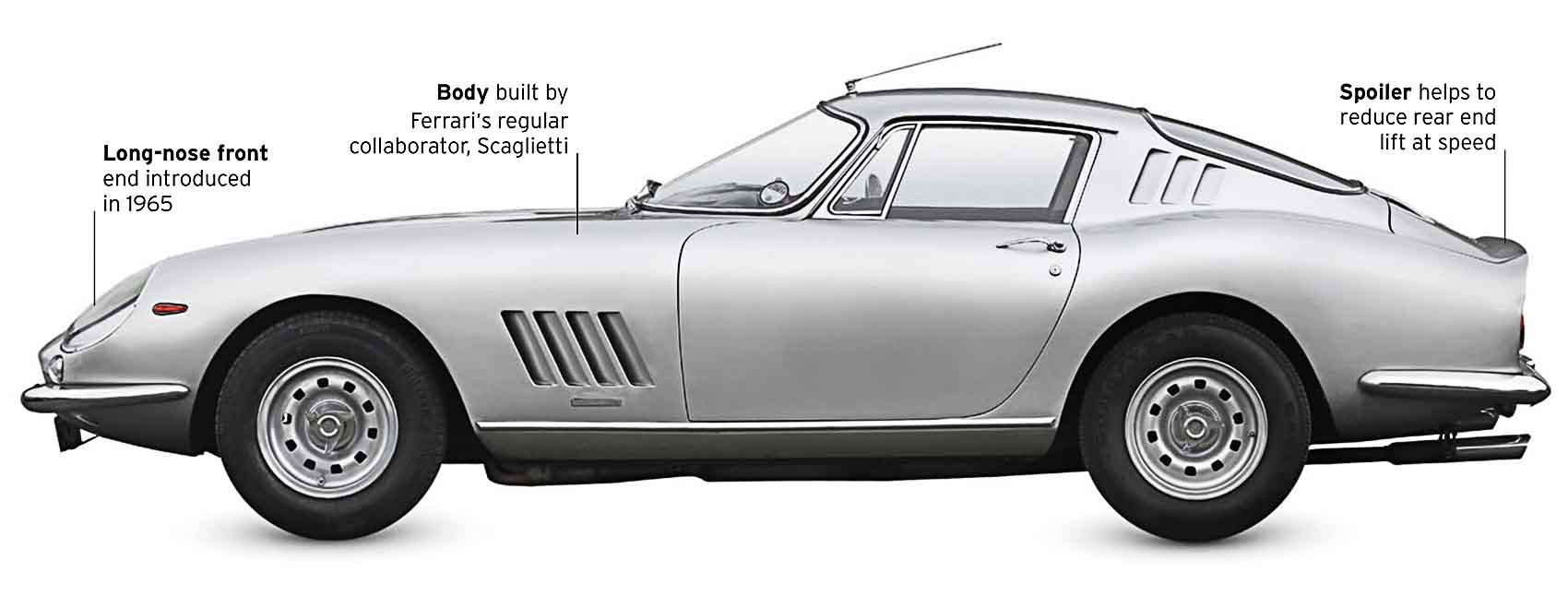
Powerful Grand Tourers
The fastest cars of the 1960s were purpose-built road machines rather than the thinly veiled racers that had gone before. Though some of them did eventually hit the tracks in stripped-out, tuned-up form, the real purpose of these cars was to provide rapid motoring and raw thrills for their drivers rather than to win races, and as the decade wore on they became further and further removed rom their competition cousins. That was no bad thing: this was an era that produced some of the most spectacular and sought-after fast cars ever made.
Lamborghini Miura, 1966

| Origin | Italy |
| Engine | 3,929 cc, V12 |
| Top speed | 175 mph (281 km/h) |
Lamborghini invented the supercar with the Miura, launched at the 1966 Geneva Motor Show. Staggeringly beautiful, technically pre-eminent, and unbelievably quick, it was created by a triumvirate of engineering wizards all still in their twenties. Outrageously exotic colors completed a package that perfectly mirrored the mid-1960s.

Steel style
Miura had a steel superstructure and steel doors. The front and rear closing panels were made of aluminum alloy. All the production Miuras were fixed-roof coupes, though Bertone made a single Miura Roadster. A few more cars have since been converted.

Wider wings
The Miura SV had wider rear wheels, and the rear wings were extended outwards to suit. The rear lights were also updated, and there was “SV” badging. Under the skin the engine had new carburettors and modified valve timing to liberate an extra 15 bhp, and the last cars had separate gearbox/engine lubrication

Italian Powerhouse
To allow for a shorter, more nimble wheelbase, the V12 engine was mounted transversely. The gearbox, final drive, and crankcase were all cast in one piece to also save space.
Maserati Ghibli, 1967

| Origin | Italy |
| Engine | 4,719 cc, V8 |
| Top speed | 165 mph (266 km/h) |
Maserati’s magnificent four-cam, V8 engine enabled this luxurious coupe to perform like a supercar. The car’s perfectly proportioned fastback body was styled by Giorgetto Giugiaro at Ghia of Italy, and the coupe was joined later by an impossibly stylish convertible.
Ferrari 275GTB, 1965

| Origin | Italy |
| Engine | 3,286 cc, V12 |
| Top speed | 153 mph (246 km/h) |
Perfectly proportioned styling by Pininfarina, a five-speed gearbox, and all-independent suspension showed that Ferrari was moving with the times. The six-carburettor versions did 165 mph (266 km/h). The Long-nose Series 2 was available from 1965, and an even faster 275GTB/4 with four-cam engine and many other improvements from 1966.
Toyota 2000GT, 1966

| Origin | Japan |
| Engine | 1,988 cc, straight-six |
| Top speed | 128 mph (206 km/h) |
A pretty coupe with performance and equipment to match its good looks, this model remained rare (only 337 built) because it was made before Toyota was ready to tackle big export markets. It proved however that Japanese designs could now rival the best in the world.
Dino 246 GT, 1969

| Origin | Italy |
| Engine | 2,418 cc, V6 |
| Top speed | 148 mph (238 km/h) |
Ferrari’s Porsche 911 competitor, the Dino, was beautiful, fast, and handled superbly. The first 206 was a 2.0 liter, but the 246 of 1969 had 2.4 liters and 195 bhp. Dino was a marque in its own right, so these cars never wore Ferrari badges when new.
It is a quote. The Classic Car Book – The Definitive Visual History 2016





No Comments